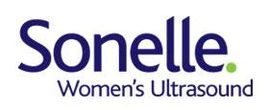Central Auckland, East Auckland, North Auckland, South Auckland, West Auckland > Private Hospitals & Specialists >
Sonelle – Specialised Women’s Ultrasound
Private Service, Radiology, Obstetrics and Gynaecology, Pregnancy Ultrasound, Obstetrics (Maternity), Gynaecology
Today
Description
Our goal is for women to have the option of comprehensive, effective and time efficient care.
Our ultrasound service offers:
- Pelvic ultrasound
- Saline infusion sonograms to assess uterine cavity
- Sonohysterogram to assess tubal patency
- Pregnancy dating
- Nuchal translucency assessment
- Anatomy assessment
- Assessment of fetal growth and well being
- Post dates assessment
Our specialist Obsterician Gynaecology consultants are Dr Chern Lo, Dr Lisa Meyer and Dr Sue Belgrave.
Dr Pilar Aparisi is our radiologist specialising in imaging of pelvic floor disorders
Our sonographers, Trish Simpson, Enya McPherson, Sheryl Watkin and Nan Wang will perform your ultrasound examination.
Consultants
-

Dr Pilar Aparisi Gomez
Radiologist
-

Dr Sue Belgrave
Obstetrician & Gynaecologist
-

Dr Chern Lo
Obstetrician & Gynaecologist
-
Dr Lisa Meyer
Obstetrician & Gynaecologist
How do I access this service?
Referral
A referral from a doctor or midwife is essential.
Referral Expectations
A referral from a doctor or midwife is essential.
Fees and Charges Description
- Please contact us for current charges.
Hours
| Mon – Fri | 8:00 AM – 4:30 PM |
|---|
Procedures / Treatments
In ultrasound, a beam of sound at a very high frequency (that cannot be heard) is sent into the body from a small vibrating crystal in a hand-held scanner head. When the beam meets a surface between tissues of different density, echoes of the sound beam are sent back into the scanner head. The time between sending the sound and receiving the echo back is fed into a computer, which in turn creates an image that is projected on a television screen. Ultrasound is a very safe type of imaging; this is why it is so widely used during pregnancy. What to expect? After lying down, the area to be examined will be exposed. Generally a contact gel will be used between the scanner head and skin. The scanner head is then pressed against your skin and moved around and over the area to be examined. At the same time the internal images will appear onto a screen.
In ultrasound, a beam of sound at a very high frequency (that cannot be heard) is sent into the body from a small vibrating crystal in a hand-held scanner head. When the beam meets a surface between tissues of different density, echoes of the sound beam are sent back into the scanner head. The time between sending the sound and receiving the echo back is fed into a computer, which in turn creates an image that is projected on a television screen. Ultrasound is a very safe type of imaging; this is why it is so widely used during pregnancy. What to expect? After lying down, the area to be examined will be exposed. Generally a contact gel will be used between the scanner head and skin. The scanner head is then pressed against your skin and moved around and over the area to be examined. At the same time the internal images will appear onto a screen.
After lying down, the area to be examined will be exposed. Generally a contact gel will be used between the scanner head and skin. The scanner head is then pressed against your skin and moved around and over the area to be examined. At the same time the internal images will appear onto a screen.
These procedures are done to evaluate the insde of the uterus (uterine vacity) for adhesions, fibroids or polyps. Saline is infused via a small tube into the uterus through the cervix and images are taken during the procedure. The same procedure is also used to check whether the tubes are open as part of fertility investigations. Gel with microbubbles is instilled into the uterus and followed by ultrasound to see if the bubbles follow the tubes.
These procedures are done to evaluate the insde of the uterus (uterine vacity) for adhesions, fibroids or polyps. Saline is infused via a small tube into the uterus through the cervix and images are taken during the procedure. The same procedure is also used to check whether the tubes are open as part of fertility investigations. Gel with microbubbles is instilled into the uterus and followed by ultrasound to see if the bubbles follow the tubes.
The same procedure is also used to check whether the tubes are open as part of fertility investigations. Gel with microbubbles is instilled into the uterus and followed by ultrasound to see if the bubbles follow the tubes.
Website
Contact Details
106 Remuera Road, Remuera, Auckland
Central Auckland
-
Phone
(09) 523 5959
Healthlink EDI
sonelles
Email
Website
106 Remuera Road
Remuera
Ōrākei
Auckland 1023
Street Address
106 Remuera Road
Remuera
Ōrākei
Auckland 1023
Postal Address
Sonelle Women's Ultrasound
106 Remuera Road
Remuera
Auckland 1050
Was this page helpful?
This page was last updated at 12:51PM on June 17, 2024. This information is reviewed and edited by Sonelle – Specialised Women’s Ultrasound.

